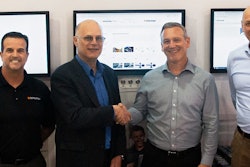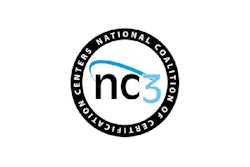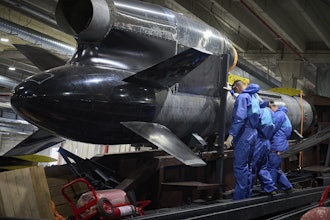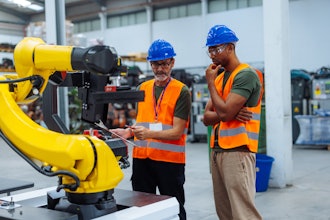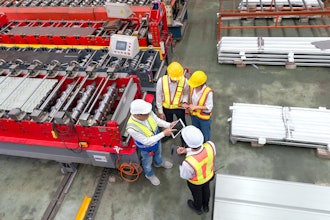
 Douglas Gastich, President of BlueVolt.
Douglas Gastich, President of BlueVolt.According to the recently published “2018 Training Industry Report,” manufacturers and distributors spent, on average, $4.2 million on training last year. The report notes the bulk of 2019 training funds will go to mandatory compliance training, while “none of the respondents said they are planning to obtain revenue through external training.”
If manufacturers don’t see a link between training and revenue (either in terms of selling their content or spurring direct sales of their product via content), they’re overlooking an incredibly valuable strategy for influencing reps. In fact, education should be an integral part of a company’s strategy for influencer marketing (i.e., focusing attention on people who sway others to buy).
Here’s an example of how education underpins influencer marketing: At WernerCo—a worldwide manufacturer and distributor of climbing, fall protection and storage equipment—training professionals work closely with the company’s marketing and business lines to bring new products to market. If the company unveils new fall-protection equipment, the training team will give WernerCo’s distributors an online training module to help them understand the benefits of the product as well as complementary offerings and share that know-how with customers such as facility managers and construction firms.
“It’s a good strategy for a company’s training courses to present a range of products,” says EJ Fromer, marketing and elearning content manager for WernerCo. “With that information planted in a customer’s mind, they recall the product and buy. That’s the way it’s worked at WernerCo.”
WernerCo’s strategy with training is no different than other manufacturing processes like machining, injection molding, casting and 3D printing. For WernerCo, education is measured, assessed, calibrated. If a manufacturer adheres to the principles of rate, quality and sustainability with regard to engineering its products, why not employ similar principles for engineering customer influence?
Marketing Beyond the Tailgate
In the manufacturing world, the concept of influencing an audience beyond your walls has been around as long as there have been “tool days,” “truck rolls” and “lunch and learns.” Education is the original influencer marketing. But the platform by which manufacturers influence people is changing.
The shift in the way we influence people is akin to the way manufacturing itself has evolved from putting together hand-crafted piecework to standardizing throughput with assembly lines to improving speed and quality with robotic assembly. Gathering around a tailgate is valuable. But a manufacturer trying to influence customers needs to multiply those tailgate talks by a thousand times, measure the reaction of learners, understand which products sparked the most (and least) interest and identify what distributors, wholesalers or contractors want more of. Just as the assembly lines from the early 20th century sped up and standardized production, today’s websites and social media channels have boosted the throughput of training content.
Measuring Influence
But there’s a gap. Most manufacturers have no data to support whether, for example, a course delivered via YouTube is working. How does a manufacturer develop an ongoing relationship beyond its walls with a customer and give him or her the product information and support needed?
There has to be a virtual tailgate. This could take the form of an online learning portal, which not only educates distributors, engineers and others about products but also tracks and evaluates what people are learning. Until last year, Mersen, a Paris-based firm with expertise in electrical power and advanced materials, simply put training content on its website. Company managers say the content was somewhat difficult to find and didn’t require learners to register. The firm realized it had to make training more accessible for learners and easier to track for Mersen’s managers, so it developed the Mersen Knowledge Centre e-learning portal.
Mersen knows distributors are hungry for content that will help them better understand the electrical industry and the products they can sell into this market. One of the distributor companies that can take advantage of Mersen’s Knowledge Centre e-learning portal is Turtle & Hughes, which describes itself as among America’s largest independent electrical and industrial distributors.
“A common theme I’ve heard [from employees] is, ‘If we know the material, we will sell it,’” says Matt Battaglia, manager of corporate training & development for Turtle & Hughes in Linden, N.J.
Mersen’s platform is a trove of courses for distributors and customers; it’s also a platform for releasing new product launches, promotions and news related to Mersen’s contributions to the electrical industry. Regardless of which training technology a manufacturer wants to use for influencing and educating, the platform ought to:
- be easy for employees to upload and develop training content,
- deliver real-time tracking, and
- replicate an organization’s channel structure at seller branches.
If a manufacturer wants people outside its organization to enroll in training, the courses have to be accessible. Along with accessibility, it’s critical to have non-employee learners (like distributors, wholesalers or franchisees) register for training, so training teams can collect and analyze data.
Manufacturers should also consider giving industry associations and their members access to product content. By supplying a manufacturer’s courses to trade groups, course enrollments and completions among learners can jump from a few hundred to tens of thousands in a few months.
Any manufacturer that offers a wide variety of products generally has a service network that people rely on. Whether those customers are industrial tradespeople on a jobsite or a home shop, they have sales goals to reach. A manufacturer’s learning and development strategy and tactics may be one of its best weapons if deployed widely.
Douglas Gastich is the president of Portland, Oregon-based BlueVolt.





